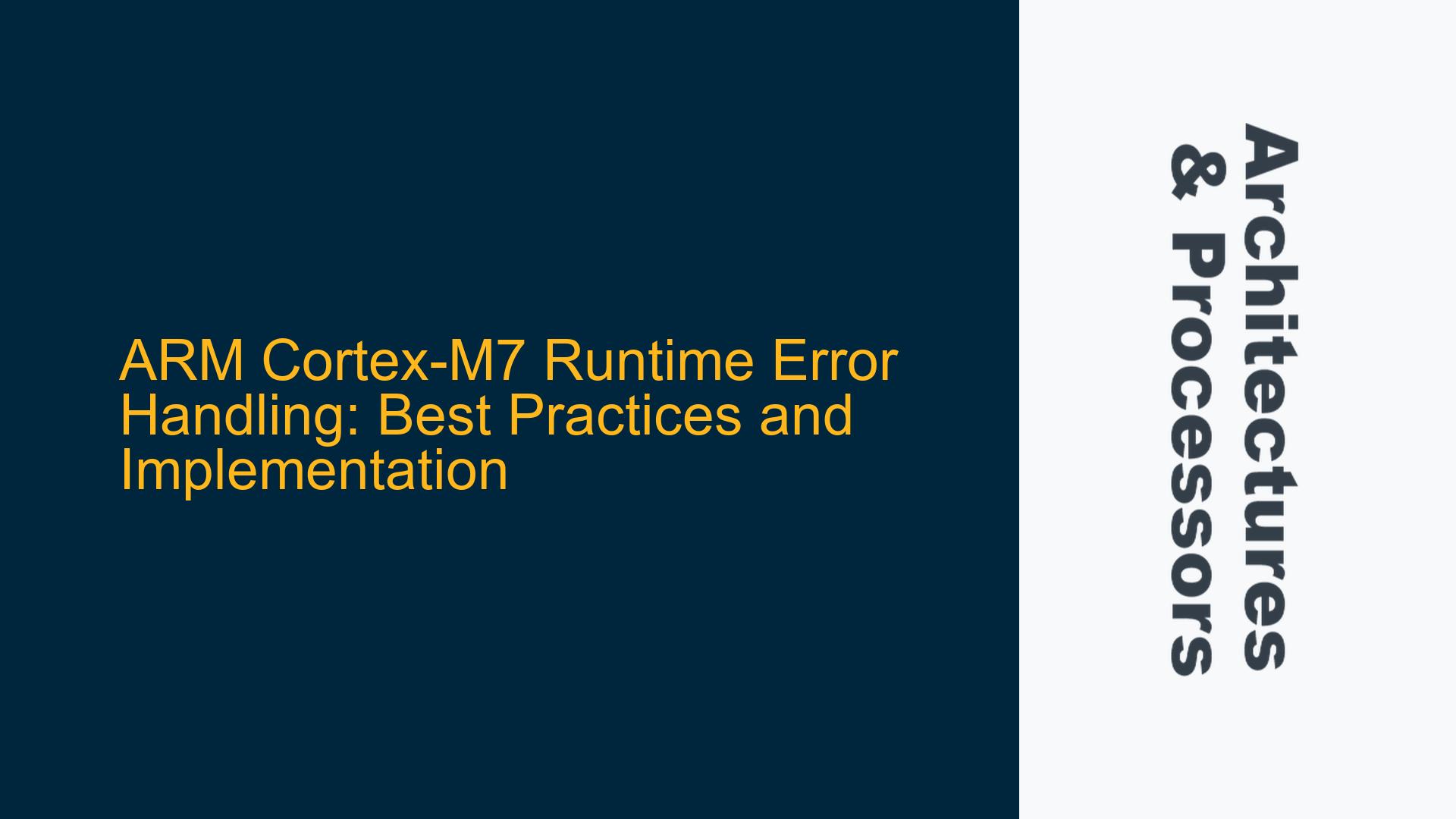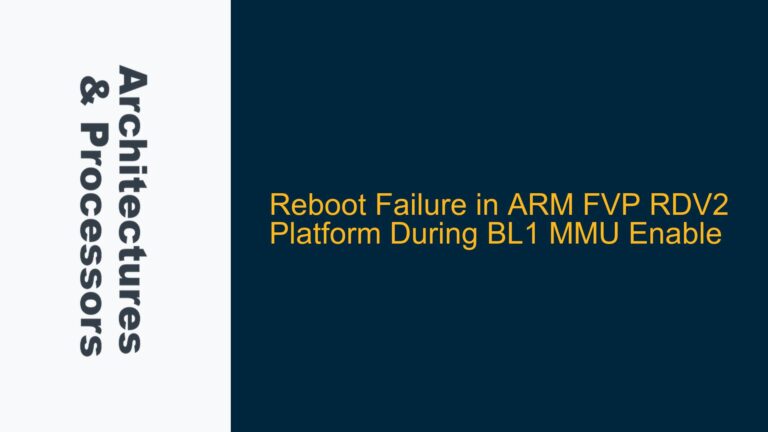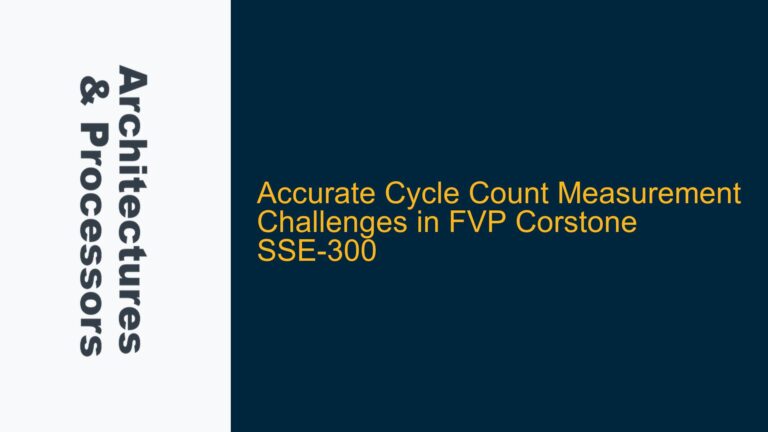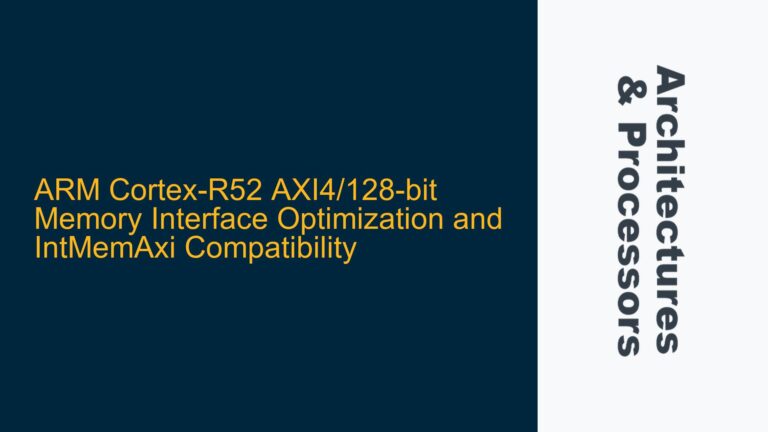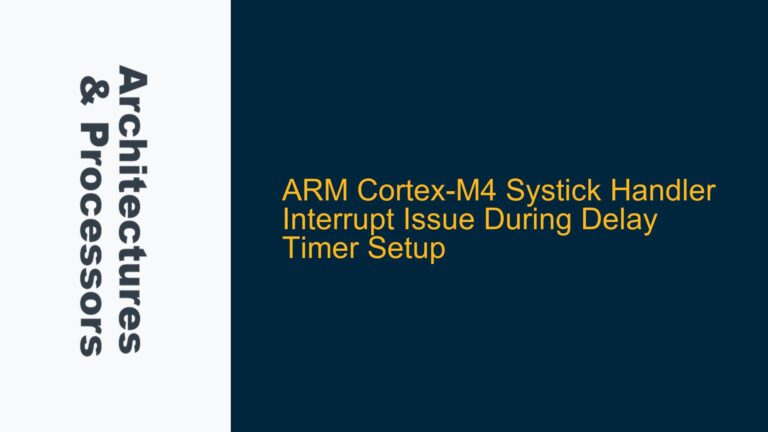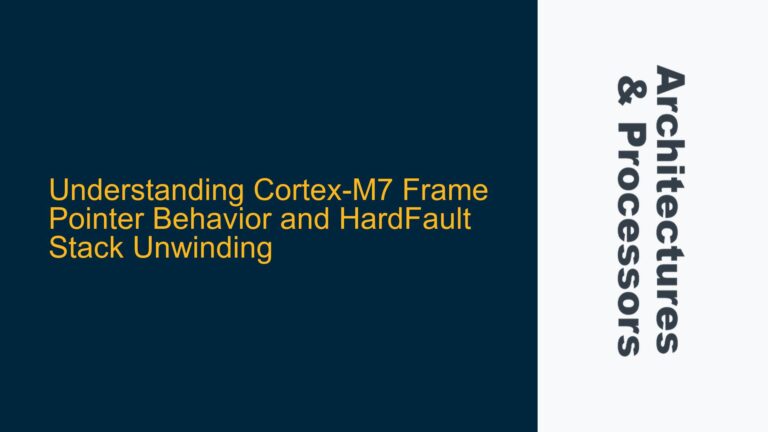ARM Cortex-M7 Runtime Error Handling Requirements
The ARM Cortex-M7 processor, like other Cortex-M series processors, is designed for embedded systems where reliability and real-time performance are critical. Runtime error handling in such systems must be efficient, deterministic, and minimally intrusive to the real-time operation of the system. The Cortex-M7 architecture provides several mechanisms for handling runtime errors, including the Nested Vectored Interrupt Controller (NVIC), System Control Block (SCB), and Fault Exceptions. These mechanisms allow developers to detect and respond to errors such as invalid memory access, division by zero, and undefined instructions.
In the context of the Cortex-M7, runtime errors can be categorized into two types: synchronous and asynchronous. Synchronous errors are those that occur as a direct result of executing an instruction, such as an invalid memory access or an undefined instruction. Asynchronous errors are those that occur independently of the instruction stream, such as a bus fault or a memory management fault. The Cortex-M7 provides dedicated fault handlers for these types of errors, which can be customized to handle specific error conditions.
The challenge in implementing runtime error handling on the Cortex-M7 lies in balancing the need for robust error detection and recovery with the constraints of real-time performance and memory usage. The Cortex-M7 does not natively support high-level language constructs like try-catch blocks, which are commonly used in desktop and server environments. Instead, developers must rely on lower-level mechanisms provided by the hardware and the C/C++ runtime environment.
Misuse of Longjmp/Setjmp and MISRA Compliance Concerns
One common approach to implementing runtime error handling in C/C++ is the use of setjmp and longjmp functions. These functions allow a program to save the current execution state and later restore it, effectively implementing a form of non-local goto. While this approach can be used to simulate try-catch behavior, it has several drawbacks, particularly in the context of embedded systems.
The primary concern with setjmp and longjmp is their non-compliance with the MISRA C guidelines. MISRA C is a set of coding standards designed to ensure the safety and reliability of embedded systems. The guidelines explicitly prohibit the use of setjmp and longjmp due to their potential to introduce undefined behavior and complicate control flow. In particular, longjmp can bypass normal stack unwinding, leading to resource leaks and inconsistent program states.
Another issue with setjmp and longjmp is their impact on performance and memory usage. These functions require the storage of the entire execution state, including the program counter, stack pointer, and registers. On a resource-constrained system like the Cortex-M7, this can lead to significant overhead, particularly if error handling is frequent. Additionally, the use of setjmp and longjmp can interfere with the operation of the NVIC and other hardware mechanisms, potentially leading to unpredictable behavior.
Given these concerns, it is generally advisable to avoid setjmp and longjmp in favor of more deterministic and MISRA-compliant error handling mechanisms. The Cortex-M7 provides several alternatives, including fault handlers, assertions, and custom error handling routines, which can be tailored to the specific requirements of the application.
Implementing Custom Fault Handlers and Error Logging
To implement robust runtime error handling on the Cortex-M7, developers should leverage the processor’s built-in fault handling mechanisms. The Cortex-M7 provides several fault exceptions, including the HardFault, MemManage, BusFault, and UsageFault exceptions. These exceptions are triggered by specific error conditions, such as invalid memory access, division by zero, or an undefined instruction. By customizing the handlers for these exceptions, developers can implement error handling that is both efficient and deterministic.
The first step in implementing custom fault handlers is to configure the fault exception priorities in the NVIC. The NVIC allows developers to assign different priorities to different exceptions, ensuring that critical errors are handled promptly. For example, the HardFault exception, which is triggered by the most severe errors, should be assigned the highest priority. The MemManage, BusFault, and UsageFault exceptions can be assigned lower priorities, depending on the specific requirements of the application.
Once the fault exception priorities are configured, developers can implement custom fault handlers to respond to specific error conditions. The fault handlers should be designed to log the error, recover the system if possible, and optionally trigger a system reset. The Cortex-M7 provides several registers, such as the Configurable Fault Status Register (CFSR) and the HardFault Status Register (HFSR), which can be used to diagnose the cause of the fault. By examining these registers, the fault handler can determine the type of error and take appropriate action.
In addition to fault handlers, developers should implement assertions and error logging to detect and report runtime errors. Assertions are a form of runtime check that verifies the correctness of program assumptions. If an assertion fails, it indicates a programming error that should be corrected. Assertions can be implemented using the assert macro in C or custom assertion functions. Error logging, on the other hand, involves recording error information, such as the error type, location, and context, to a non-volatile storage medium or a UART interface. This information can be used for debugging and post-mortem analysis.
To implement error logging, developers can use the __FILE__ and __LINE__ macros to capture the source file and line number where the error occurred. This information can be combined with a custom error message and logged to a UART interface or stored in a circular buffer in memory. The error logging mechanism should be designed to minimize the impact on real-time performance, particularly in systems with strict timing requirements.
In conclusion, implementing runtime error handling on the ARM Cortex-M7 requires a combination of hardware mechanisms, software techniques, and careful design. By leveraging the processor’s fault handling capabilities, avoiding non-compliant constructs like setjmp and longjmp, and implementing robust error logging, developers can create embedded systems that are both reliable and efficient. The key is to balance the need for error detection and recovery with the constraints of real-time performance and resource usage, ensuring that the system can handle errors without compromising its primary function.
